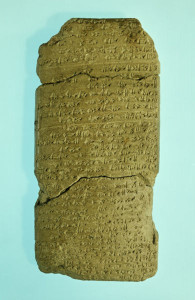Ancient Records and the Exodus Plagues, Robert R. Stieglitz, Biblical Archaeology Review (13:6), Nov/Dec 1987.
Twentieth-century Americans find it difficult to comprehend the notion of plagues. Plagues border on the realm of the unreal; they are the stuff of tall tales, myths and legends. But in the Biblical world, plagues were very real, even ever-present. The plagues of pestilence that were visited on Pharaoh and the Egyptians before he agreed to let the Israelites go reflected an immediacy to the Biblical writer and his initial audience. We, living in the 20th century, must make an affirmative effort to recover this immediacy if we are to enter the Biblical world.
Archaeologically recovered texts help us to do this. For example, in the so-called Admonitions of an Egyptian Sage,1 dating to about 2000 B.C., the prophet Ipu-wer laments the consequences of several plagues that devastated Egypt.
Plagues and pestilence were no respecters of persons. What we would call epidemics attacked king and commoner alike, to say nothing of livestock.
A letter from the cache of cuneiform tablets found at Tell el-Amarna reports that a certain Babylonian princess, whom the Pharaoh Amenophis III (c. 1402–1364 B.C.) had requested to marry, has died during an epidemic.
Read the rest of Ancient Records and the Exodus Plagues in the online Biblical Archaeology Society Library.





I watched tv documentary “Planet Egypt” about the Israelits ghetto in Egypt. The director of Cairo museum shows in front of camera 2 tablets of God of Israel’s punishment on Egypt: locusts & Egyptian chariot swallowed by sea. I’ve tried to find the images on internet but not successful. Could you help me maybe. Thank you.